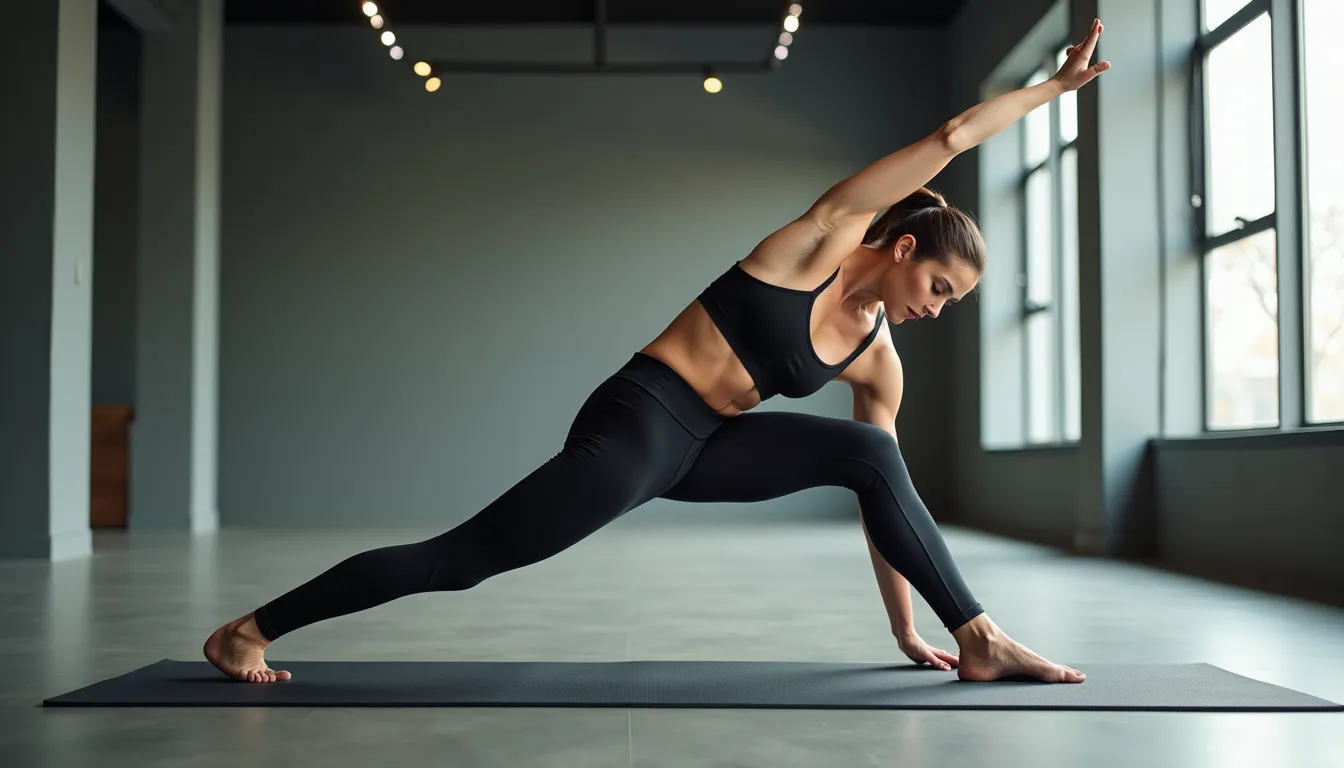
Yoga for Athletes: Enhancing Performance and Recovery
Athletes are constantly pushing their bodies to the limit, striving for peak performance in their chosen sports. While strength training, cardio, and skill drills are essential components of any training regimen, there’s one practice that often gets overlooked: yoga. Far from being just a relaxation technique, yoga is a powerful tool that can enhance athletic performance, prevent injuries, and speed up recovery. Whether you’re a professional athlete or a weekend warrior, incorporating yoga into your routine can take your game to the next level. This article explores how yoga benefits athletes and provides practical tips for integrating it into your training.
The Benefits of Yoga for Athletes
Yoga offers a unique combination of physical, mental, and emotional benefits that are particularly valuable for athletes. Here’s how it can help:
- Improved Flexibility and Range of Motion:
Many sports require repetitive movements that can lead to tight muscles and limited range of motion. Yoga stretches and lengthens muscles, improving flexibility and reducing the risk of injury. - Enhanced Strength and Balance:
Yoga poses often require you to support your body weight in new ways, building strength in underused muscles. Balancing poses like Tree Pose and Warrior III also improve stability, which is crucial for sports performance. - Faster Recovery:
Intense training can leave muscles sore and fatigued. Yoga promotes blood flow and relaxation, helping your body recover more quickly. - Injury Prevention:
By addressing muscle imbalances and improving alignment, yoga can help prevent common sports injuries like strains, sprains, and tendonitis. - Mental Focus and Clarity:
Yoga’s emphasis on mindfulness and breath control can sharpen your mental focus, helping you stay calm and composed under pressure.
Yoga Practices for Different Sports
Different sports place different demands on the body, and yoga can be tailored to meet those needs. Here’s how yoga can benefit athletes in various disciplines:
- Runners:
Running can lead to tight hamstrings, hip flexors, and calves. Yoga poses like Downward Dog, Pigeon Pose, and Low Lunge can help stretch these areas and improve stride length. - Cyclists:
Cyclists often experience tight quadriceps and hip flexors. Poses like Reclined Hand-to-Big-Toe Pose and Lizard Pose can open up the hips and relieve tension. - Swimmers:
Swimmers need strong shoulders and a flexible spine. Poses like Cobra Pose, Bridge Pose, and Eagle Pose can improve shoulder mobility and spinal flexibility. - Weightlifters:
Weightlifting can lead to tight muscles and limited range of motion. Yoga poses like Child’s Pose, Cat-Cow Pose, and Seated Forward Fold can help release tension and improve flexibility. - Team Sports (Basketball, Soccer, etc.):
Team sports require agility, balance, and quick reflexes. Yoga poses like Warrior II, Triangle Pose, and Half Moon Pose can enhance these skills.
Key Yoga Poses for Athletes
Here are five yoga poses that are particularly beneficial for athletes:
- Downward Dog (Adho Mukha Svanasana):
This pose stretches the hamstrings, calves, and shoulders while strengthening the arms and legs. It’s a great full-body stretch for athletes. - Pigeon Pose (Eka Pada Rajakapotasana):
This deep hip opener is ideal for runners and cyclists. It helps release tension in the hip flexors and glutes. - Warrior II (Virabhadrasana II):
This powerful pose strengthens the legs and core while improving balance and focus. It’s perfect for athletes who need stability and endurance. - Child’s Pose (Balasana):
This restorative pose gently stretches the back and hips, making it a great option for post-workout recovery. - Legs-Up-The-Wall Pose (Viparita Karani):
This gentle inversion helps reduce muscle soreness and fatigue by promoting blood flow and relaxation.
Tips for Incorporating Yoga into Your Training
- Start Slow:
If you’re new to yoga, start with beginner-friendly classes or online tutorials. Focus on learning proper alignment and breath control. - Make It a Regular Practice:
Consistency is key. Aim to practice yoga 2-3 times a week to see noticeable improvements in flexibility, strength, and recovery. - Use Yoga for Warm-Ups and Cool-Downs:
Incorporate yoga poses into your warm-up to prepare your body for exercise and into your cool-down to aid recovery. - Listen to Your Body:
Yoga is not about pushing yourself to the limit. Honor your body’s limits and modify poses as needed to avoid injury. - Combine Yoga with Other Recovery Techniques:
Pair yoga with other recovery methods like foam rolling, massage, and proper nutrition for optimal results.
The Mental Edge: Yoga for Focus and Resilience
In addition to its physical benefits, yoga can give athletes a mental edge. The mindfulness and breath control practiced in yoga help athletes stay calm and focused under pressure. Techniques like alternate nostril breathing (Nadi Shodhana) can calm the mind before a big game, while meditation can improve mental resilience and emotional regulation.
For athletes, the mental aspect of performance is just as important as the physical. Yoga provides tools to manage stress, overcome setbacks, and maintain a positive mindset, all of which are crucial for success in sports.
The Bottom Line
Yoga is a game-changer for athletes, offering a holistic approach to performance and recovery. By improving flexibility, strength, and mental focus, yoga can help you reach new heights in your sport while reducing the risk of injury and speeding up recovery. Whether you’re a professional athlete or a dedicated amateur, incorporating yoga into your training routine can give you the edge you need to excel.
So, roll out your mat, take a deep breath, and discover the transformative power of yoga. Your body, mind, and performance will thank you.
